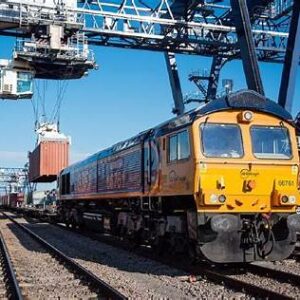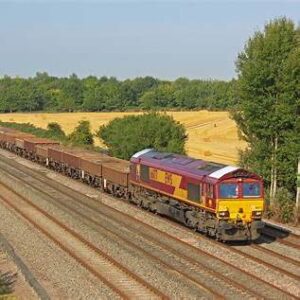Rail Freight contributes to the U.K. transport system. It offers economic benefits, environmental benefits, and improved supply chain backup. As the U.K. works towards net-zero pollution and plans to cut road traffic, the role of rail freight becomes even more critical.
Economic Strength Beyond the Capital

Besides the jobs it provides, the economic impacts of rail freight are substantial. Rail Partners estimates the sector shows an annual economic impact of nearly £2.5 billion, with more than 90% of that impact being generated from outside of Greater London and the Southeast. This demonstrates the rail freight impact on balanced economic growth. The sector employs approximately 6,500 staff, with additional jobs being supported in the supply chains of logistics, manufacturing, and construction. This sector, and more specifically rail freight, supplies the confidence that many businesses require in order to operate profitable.
Environmental Edge and Efficiency
Strong environmental credentials add to the value of rail freight services offered by the railways. A tonne of freight moved by rail emits about 76% less CO₂ than moving the same goods by road.
One freight train can remove the equivalent of more than 100 heavy goods vehicles from roads, easing congestion and reducing road damage.
Rail freight volumes have been growing in the recent quarters. During the October–December 2024 quarter, 4.065 billion net tonne-kilometres were moved, signifying an increase of 6% year over year.
GOV.UK
The sector’s major corridors linking port facilities to border regions of the country serve a wide range of goods, from intermodal containers to construction materials, and has the potential to be a significantly more efficient operation.

Challenges and Strategic Priorities
The rail freight sector will have to deal with challenges. Cost inflation over the past decade has risen significantly faster for rail than road, in part due to policies like fuel duty freezes for trucks. The demands of expanding passenger services severely limit the capacity of rail freight services. Modernized signalling and the construction of freight-only rail routes will be necessary to deliver effective freight services.
The objective of achieving a 75% increase in rail freight by 2050 is certainly optimistic, and so is the idea of high-speed freight services utilizing decommissioned passenger rolling stock. This is possible and very feasible, but it will require a significant amount of dedicated resource investment and the right policies.




